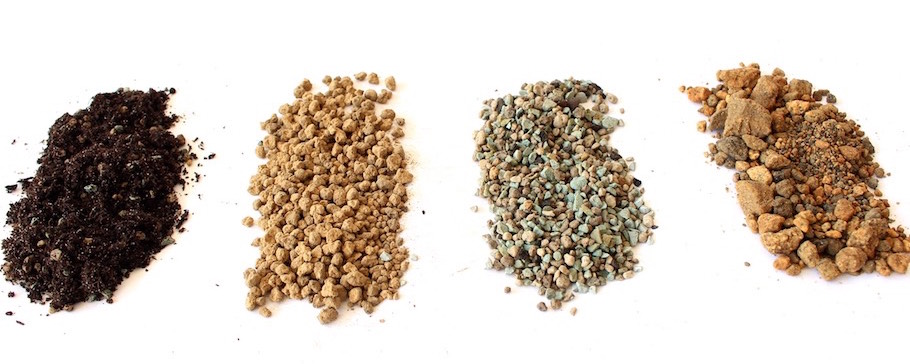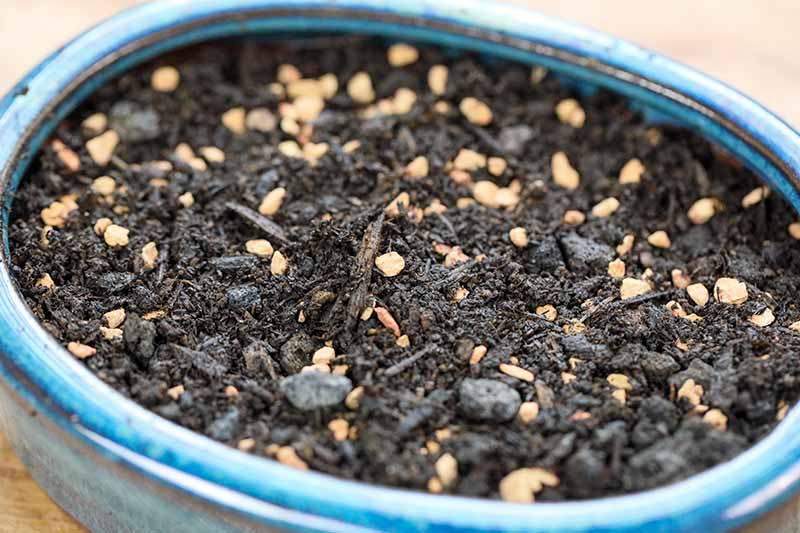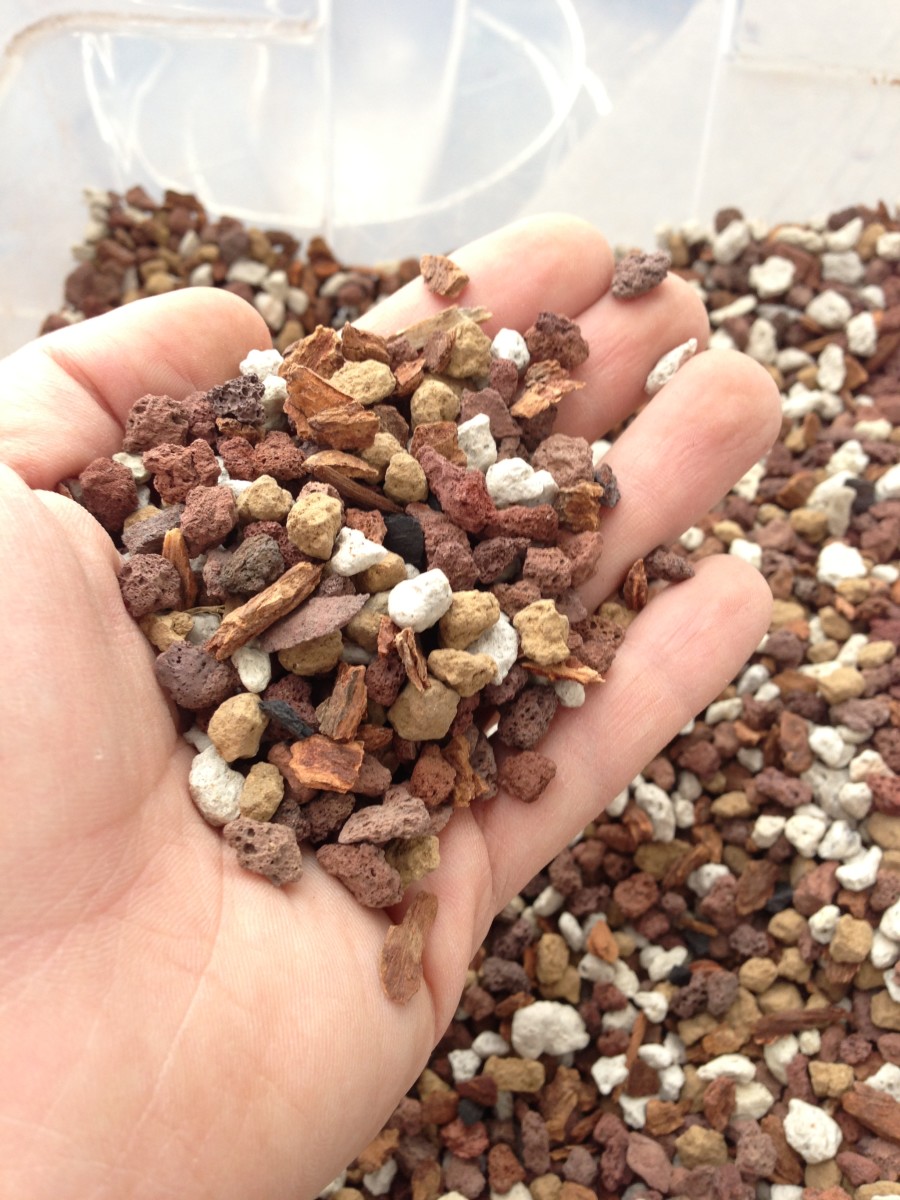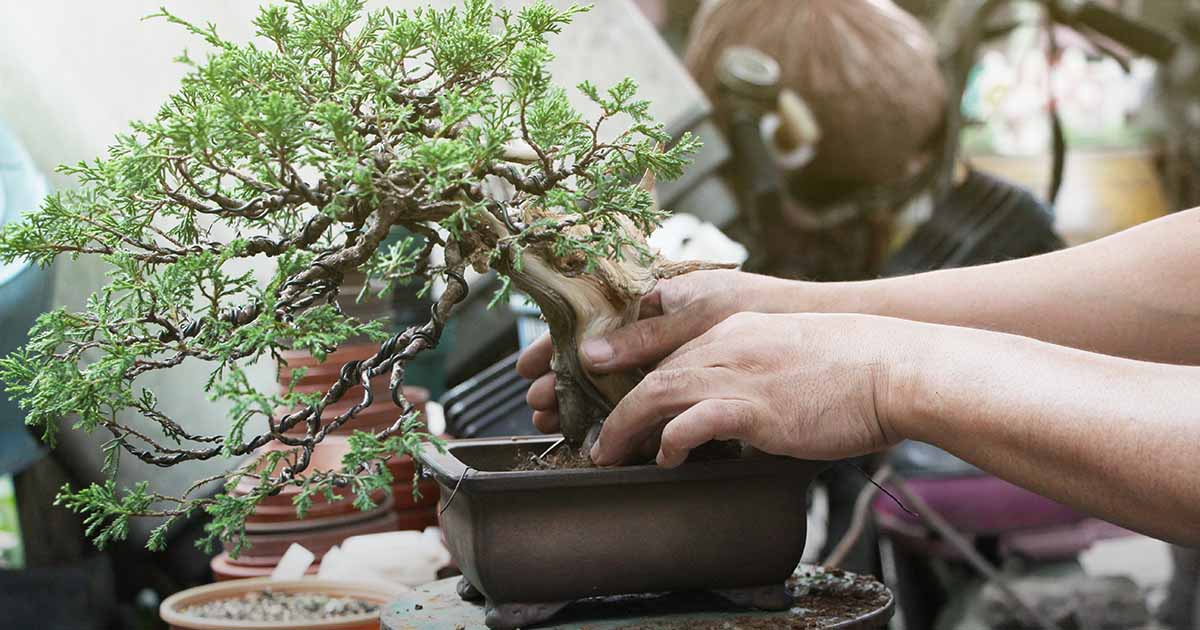What Does Aoki Bonsai soil Mean?
If you've ever been captivated because of the art of bonsai, you might be wanting to know if special soil is needed to cultivate these miniature masterpieces. The solution is Of course! Exclusive soil is important for the wellbeing and vitality of bonsai trees.In the following paragraphs, we will check out the different sorts of soil and substrates Utilized in bonsai cultivation, such as organic and inorganic solutions.
We are going to also find out advised soil mixtures for numerous bonsai species, such as deciduous, coniferous, and indoor kinds. From akadama and pumice to moss and river sand, we will dive in to the fascinating environment of bonsai soil and assist you realize why It is an important Element of cultivating these exquisite trees.

Bonsai soil
What is bonsai soil?
Bonsai soil is a specialized type of soil that is specifically formulated for growing and maintaining bonsai trees. Unlike regular garden soil, bonsai soil is well-draining and provides the necessary nutrients and moisture balance for the tree's root system. The composition of bonsai soil is carefully designed to meet the unique needs of bonsai trees, ensuring their health and longevity.
The importance of bonsai soil
The choice of soil plays a crucial role in the success of your bonsai tree. The right soil provides optimal drainage, allowing excess water to flow freely and preventing root rot. It also promotes a healthy and well-developed root system, which is essential for the overall health and growth of the tree. Bonsai soil retains moisture while allowing air to reach the roots, striking the perfect balance for the tree's needs. Choosing the right bonsai soil is essential for maintaining a healthy and thriving bonsai tree.
Bonsai substrates
What are bonsai substrates?
Bonsai substrates refer to the different materials that can be used to create the ideal soil composition for bonsai trees. These substrates are carefully chosen to meet the specific needs of different species of bonsai trees and to ensure proper water drainage and nutrient availability.
Different types of bonsai substrates
There are various types of bonsai substrates available, each with its own unique characteristics and benefits. Some common bonsai substrates include:
- Organic materials: These include ingredients such as bark, peat moss, and coconut coir. Organic substrates help retain moisture and provide essential nutrients to the bonsai tree.
- Inorganic products: These contain elements like pumice, lava rock, and akadama. Inorganic substrates deliver excellent drainage, guaranteeing that extra h2o isn't going to accumulate round the roots on the bonsai tree.
- Soil amendments: They're substances that are extra towards the soil mixture to boost its Attributes. Examples of soil amendments include perlite, vermiculite, and sand. They Enhance the soil's aeration, h2o-holding ability, and nutrient availability.
By comprehending the differing types of bonsai substrates and their Homes, you can pick out the most fitted one particular for your personal bonsai tree's wants.
Natural and organic or Inorganic Soils
Organic soils for bonsai
Natural soils for bonsai are made up of natural resources which include bark, peat moss, coconut coir, and compost. These supplies offer a loaded supply of nutrients for your bonsai tree and encourage balanced root advancement. Organic and natural soils even have superior water retention Homes, ensuring which the tree receives satisfactory dampness involving watering classes. Nevertheless, it's important to notice that organic soils may perhaps break down with time and become compacted, resulting in poor drainage and likely root difficulties.
Inorganic soils for bonsai
Inorganic soils for bonsai encompass products like pumice, lava rock, akadama, and soil amendments like perlite or vermiculite. These materials have excellent drainage Attributes, blocking waterlogged soil and advertising and marketing aeration throughout the roots. Inorganic soils are desired by several bonsai fans because of their longevity and skill to offer a secure surroundings for your bonsai tree's root method. On the other hand, They could involve extra Regular watering and extra fertilization, as they don't keep just as much dampness or nutrients as organic soils.
Pros and cons of applying natural and inorganic soils for bonsai
Choosing among organic and inorganic soils for your personal bonsai tree depends on several things, including the particular species of tree, your local weather, and personal Choices. Listed below are the pluses and minuses of every:
Organic soils:
- Execs: Present nutrients, good h2o retention, endorse nutritious root progress.
- Drawbacks: May stop working eventually, probable for lousy drainage Otherwise adequately preserved.
Inorganic soils:
- Execs: Exceptional drainage, long-lasting, stable surroundings for roots.
- Cons: Considerably less water retention, may require much more Repeated watering and fertilization.
By looking at the positives and negatives of both of those organic and natural and inorganic soils, you can also make an informed conclusion determined by the particular requirements of one's bonsai tree.
Soil elements
Critical components of bonsai soil
Bonsai soil is typically made up of a few key elements: grit, natural and organic make any difference, and clay. These components work alongside one another to develop The best soil structure for the bonsai tree's root technique.
- Grit: Grit, including sand or perlite, presents drainage and aeration in the soil. It helps avert waterlogging and enables air to reach the roots.
- Organic issue: Natural and organic matter, including compost or bark, provides nutrients for the bonsai tree. What's more, it helps retain dampness and Increase the soil's overall construction.
- Clay: Clay particles supply some water retention features and assist bind the soil collectively. However, a lot of clay may lead to very poor drainage and compaction.
Function of each soil ingredient
Every single soil ingredient performs an important job in developing a effectively-well balanced and nutritious natural environment for your bonsai tree's roots.
- Grit: Grit provides the necessary drainage and aeration within the soil. It stops the roots from sitting in stagnant drinking water, lowering the potential risk of root rot and advertising and marketing All round root wellbeing.
- Organic and natural make any difference: Organic subject provides important nutrients to the bonsai tree. It aids in humidity retention and contributes to the overall structure from the soil.
- Clay: Clay particles help bind the soil alongside one another and provide some drinking water retention capacity. However, it is vital to equilibrium the quantity of clay in order to avoid troubles like bad drainage and compaction.
By comprehension the roles of every soil part, you'll be able to develop a well balanced bonsai soil mix that satisfies the specific desires of one's tree.

Recommended Bonsai soil mixtures
Common bonsai soil mixtures
There are several common bonsai soil mixtures that have been proven effective for various types of bonsai trees. These mixtures typically consist of a combination of inorganic substrates, organic matter, and soil amendments.
Some of the commonly used bonsai soil mixtures include:
- Akadama, pumice, and lava rock: This mixture is popular among bonsai enthusiasts for its excellent drainage and water retention properties.
- Akadama, lava rock, and natural make a difference: This combination combines the key benefits of inorganic substrates with the nutrient-abundant Qualities of natural make a difference.
- Pumice, perlite, and bark: This mixture delivers excellent drainage and aeration though retaining some humidity and providing nutrients.
These are typically just some examples of bonsai soil mixtures, and The perfect mixture will depend on the particular needs of your respective bonsai tree and also your climate.
Variables to contemplate when deciding upon a bonsai soil mixture
When picking out a bonsai soil mixture, it is vital to take into consideration the next things:
- Species of bonsai tree: Diverse species have different dampness and nutrient prerequisites. Research the precise wants of the tree to pick a soil mixture that satisfies its demands.
- Climate: The local climate you live in can influence the dampness retention Attributes of the soil. Evaluate the average humidity and temperature close to you When selecting a soil combination.
- Watering routines: Your own watering routines and schedule must align Together with the soil mixture you select. Some mixtures involve a lot more Regular watering, while some keep dampness for lengthier periods.
- Finances: Some soil factors might be costlier than Other folks. Look at your spending plan when choosing a soil mixture.
By taking these aspects into consideration, it is possible to select a bonsai soil mixture that provides the very best increasing ailments in your tree.
Deciduous Bonsai soil
Most effective soil composition for deciduous bonsai
Deciduous bonsai trees, such as maple or birch, have particular soil requirements to support their growth and health. The best soil composition for deciduous bonsai ordinarily features a mixture of organic subject, inorganic substrates, and soil amendments.
A encouraged soil composition for deciduous bonsai may possibly incorporate:
- Akadama: Supplies excellent water retention while permitting for drainage. It also releases nutrients gradually over time.
- Pumice: Encourages aeration and drainage while in the soil, stopping waterlogging.
- Bark or peat moss: Provides natural and organic issue for the soil, supplying nutrients and humidity retention.
This soil composition makes sure that the roots of deciduous bonsai trees receive the appropriate stability of moisture, nutrients, and oxygen for best expansion.

Coniferous and Pine soil
Ideal soil mixture for coniferous and pine bonsai
Coniferous and pine bonsai trees have specific soil requirements due to their water retention needs and preference for acidic soil. An ideal soil mixture for coniferous and pine bonsai should provide good drainage while retaining moisture and maintaining the desired pH level.
A recommended soil mixture for coniferous and pine bonsai website may include:
- Akadama: Provides excellent water retention while allowing for sufficient drainage. It releases nutrients slowly over time.
- Pumice: Promotes aeration and drainage in the soil, protecting against waterlogged roots.
- Peat moss: Adds organic and natural issue and acidity for the soil, creating a great pH degree for coniferous and pine trees.
This soil combination makes sure that the roots of coniferous and pine bonsai trees receive the appropriate stability of humidity, nutrients, and acidity for their precise requirements.
Akadama
What's akadama?
Akadama is actually a type of clay soil that is definitely widely used in bonsai cultivation. It can be known for its great water retention Houses, which make sure a steady offer of humidity for the bonsai tree's roots. Akadama is usually prized for its capability to release nutrients gradually eventually, delivering a consistent supply of nourishment for the tree.
Benefits of applying akadama in bonsai soil
Making use of akadama in bonsai soil provides a number of Added benefits:
- H2o retention: Akadama has Remarkable drinking water retention Attributes, allowing it to hold dampness devoid of getting waterlogged. This ensures that the bonsai tree's roots receive a constant offer of h2o, advertising healthy advancement.
- Nutrient release: Akadama slowly and gradually releases nutrients into your soil after a while, supplying a dependable source of nourishment for that bonsai tree. This lessens the necessity for Recurrent fertilization and aids retain a well balanced nutrient profile.
- Aeration: Inspite of its h2o retention capabilities, akadama also offers satisfactory aeration on the bonsai tree's roots. It lets air to get to the root method, stopping challenges such as root rot because of lack of oxygen.
By incorporating akadama to the bonsai soil, you are able to develop an optimum expanding atmosphere to your tree, ensuring its well being and vitality.

Lava rock
How lava rock benefits bonsai soil
Lava rock is a popular component in bonsai soil mixtures due to its excellent drainage and aeration properties. It is typically used in conjunction with other substrates to create the ideal soil composition for bonsai trees.
The benefits of lava rock in bonsai soil include:
- Drainage: Lava rock provides excellent drainage, preventing waterlogging and ensuring that excess water flows freely through the soil. This helps prevent root rot and provides a healthy environment for the roots to thrive.
- Aeration: The porous nature of lava rock will allow air to flow into inside the soil, offering oxygen for the bonsai tree's root system. Good aeration is very important for wholesome root growth and Over-all tree advancement.
- Longevity: Lava rock is often a resilient substance that doesn't break down effortlessly. This makes certain that the soil framework stays steady eventually, cutting down the necessity for Repeated soil replacements.
Lava rock is obtainable in different measurements and styles, making it possible for for customization according to the precise desires of one's bonsai tree and soil necessities.
Differing kinds of lava rock
You will find different types of lava rock that can be Utilized in bonsai soil mixtures, like:
- Black lava rock: Black lava rock is actually a commonly applied materials in bonsai soil mixtures. It offers superb drainage Attributes and adds an aesthetic aspect to the overall presentation on the bonsai tree.
- Red lava rock: Purple lava rock is an additional common option in bonsai soil mixtures. It provides comparable drainage and aeration Rewards as black lava rock but has a definite reddish color that provides visual fascination to the container.
Equally black and pink lava rocks check here are widely out there and might be effortlessly integrated into your bonsai soil combination.
Potting
Essential techniques for thriving bonsai potting
Potting is a significant method in bonsai cultivation, since it directly impacts the wellness and progress of the tree's roots. Here are some essential techniques for prosperous bonsai potting:
- Pick the correct pot measurement: Pick out a bonsai pot which allows for root growth whilst nevertheless delivering a cosy in good shape. Keep away from pots which can be far too significant, since they can lead to excessive soil moisture and poor root improvement.
- Use bonsai wire: Secure the tree inside the pot making use of bonsai wire to make certain security. This stops the tree from shifting or turning out to be uprooted through watering or potent winds.
- Trim and distribute the roots: Right before potting the bonsai tree, diligently trim and distribute out the roots. This encourages outward expansion and stops root tangling or root-certain concerns.
- Incorporate mesh screens: Area mesh screens in excess of the drainage holes at The underside of the pot to prevent soil erosion and ensure proper drainage.
- Use fresh bonsai soil: When potting, normally use fresh new bonsai soil to deliver the required nutrients and ideal expanding conditions with the roots.
By pursuing these vital guidelines, you could be certain A prosperous potting approach and advertise the general wellbeing and progress of the bonsai tree.
The role of bonsai pots in soil humidity Handle
Bonsai pots Perform an important position in soil moisture Command, right impacting the wellbeing and progress from the tree. Bonsai pots are generally shallow and also have drainage holes, allowing excessive drinking water to flee and avoiding the soil from becoming waterlogged.
The look of bonsai pots promotes evaporation and air circulation, which will help regulate soil dampness ranges. The shallow depth and huge opening in the pot expose extra floor space in the soil towards the air, aiding in dampness evaporation. This stops the roots from sitting down in excessively moist soil, lessening the risk of root rot and also other water-similar troubles.
Additionally, the drainage holes in bonsai pots enable any excess drinking water to flee, protecting against waterlogged soil and endorsing aeration within the roots. Correct aeration is essential for the health and fitness and growth of the basis technique, making certain the bonsai tree gets the required oxygen for progress.
By utilizing bonsai pots made for productive dampness Command, you'll be able to build a good setting in your bonsai tree's roots and market its overall overall health and vitality.
In conclusion, picking out the correct bonsai soil is important with the results and health and fitness of the bonsai tree. Comprehension the different types of bonsai substrates, the part of organic and natural and inorganic soils, The main element factors of bonsai soil, and the varied recommended soil mixtures will help you deliver the optimum rising situations on your bonsai tree. No matter if you've got a deciduous or coniferous bonsai, incorporating resources like akadama and lava rock can enhance the soil's drainage and nutrient availability. In addition, paying attention to potting tactics and making use of bonsai pots designed for dampness Command will even more guidance the thriving advancement of your bonsai tree. With right understanding and implementation of bonsai soil practices, you'll be able to enjoy the beauty and artistry of bonsai cultivation For some time to come back.
